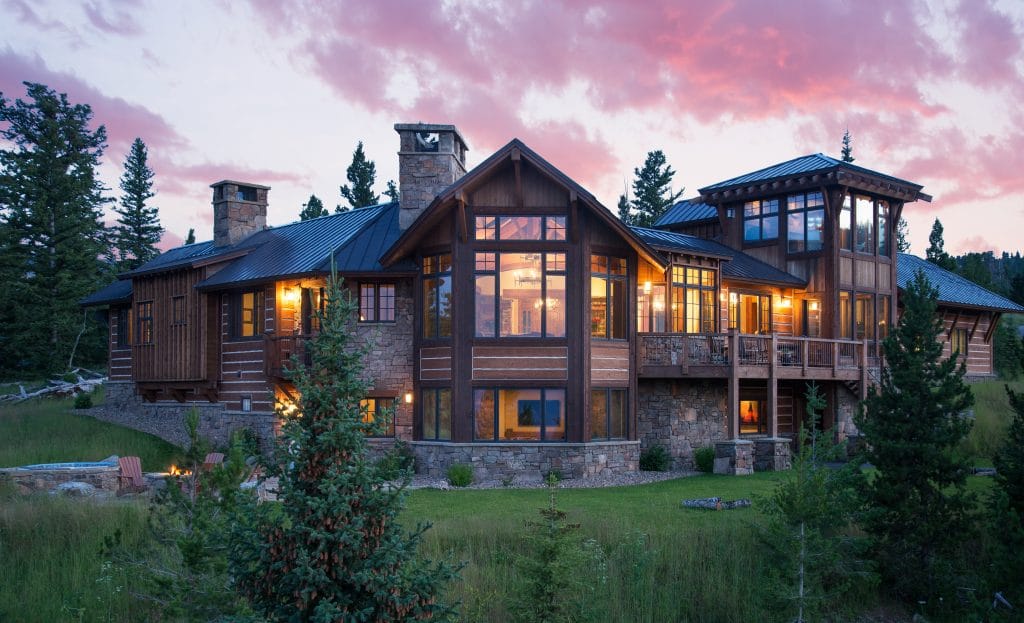Picture in your mind a home that embraces the rugged natural beauty of rustic design through
exposed wood and vaulted ceilings while utilizing modern elements such as glass, geometric
shapes, and decadently textured interior materials. Welcome to the world of modern-rustic
architecture.
This type of architecture is being seen more and more in homes tucked away on mountainsides
across the U.S. Earth tones and wood-clad walls accentuate the rustic design in these homes,
and modern dimensions add an artistic and clean element that allows the creativity of the
architecture to shine through. The fusion of these two styles has launched the mountain modern
architecture movement and is a stunning unification of two timeless styles.
Defining Modern and Rustic Architecture
Modern and rustic architecture are both specific architectural styles that have carried their own
tune very prominently. To fuse these two dynamic styles together seamlessly requires knowing
the nuances of each domain.
Modern architecture captures a spirit of innovation because of the light feeling, openness, and
clean lines this style provides. Glass, steel, and reinforced concrete is what makes modern
homes stand out and confidently exist at the pinnacle of functionalism and minimalism.
Rectangular lines, geometric shapes, and materials used in distinct planes and vertical
patterns–colligated with horizontal pieces are crucial elements of modern architecture.
Overhangs and open floor plans are also commonly seen in many modern homes and are
another vital component of contemporary design success. Modern architecture took flight at the
end of the 19th century and was a new concept that sought to raise functionality to the level of
necessity.
Rustic architecture integrates nature into every part of the home by using natural wood, stone,
and brick. Think log construction styling with roughly finished wood, handcrafted details such as
stone crafted chimneys, shake roofs, wrought iron, and forged hardware. The crux of rustic
design is more about texture than anything else.
The impact that rustic architecture has on the psyche is profound. Being surrounded with rustic
finishes triggers a nostalgic reaction that is calming and a reminder of nature and America’s rich
history. From the American frontier until now, rustic design has become more mainstream as
the green building and the green living movement continue to build momentum.
Achieving The Perfect Design Unification
The crux of modern-rustic architecture is the ability to blend both wood and cement in a refined
way. Striking a balance between the effortless appeal of contemporary design and the poetic
nature of rustic architecture requires a keen understanding of earth tones, light, shadow, and
space. The rise of modern architecture in mountain homes is ushering in mountain modern
fusion design, which is pioneering the new frontier of wilderness homes.
One concept in mountain modern fusion design that honors both rustic and contemporary styles
is using wood accents and dense natural pieces when possible to offset modern concrete
backdrops. Interiors can be minimal and rustic at the same time by leaving walls bare and using
textured natural features to overlay interior walls, overhangs, and doors. Light is a prominent
decorative element in this style of home, and using cool tones in rooms will maximize the
natural light that will be allowed in through floor-to-ceiling glass windows.
Another critical part of achieving unity in mountain modern fusion design is architecting fluid
transitions between indoor and outdoor spaces. Outdoor kitchens, landscaped green areas,
fountains, and access to plant life is essential to create harmony with surrounding mountain-
scapes.
Overhangs help shield residents from the elements, and using a mixture of wood, concrete, and
glass for outdoor areas creates a stunning exterior escape that is comfortable, aesthetically
inspiring, and innovative.
Conclusion
Modern-rustic design is not only captivating. It’s also the perfect way to reduce a home’s carbon
footprint. The clearcut layout of modern homes allows for pre-assembly and using locally
sourced materials, and reclaimed materials integrate homes with their surroundings much more
fluidly. Utilizing local products also helps to reduce carbon emissions caused by importing
products. Another benefit of a mountain-modern home is that they are largely low maintenance
because of the ease of care required for natural materials and straightforward floorplans.
The new era of mountain-modern home architecture is a trend that will only grow in popularity.
The move towards more eco-friendly living solutions plus the return to traditional rustic design is
the ideal convergence of two periods in America that are a symbol of change.

